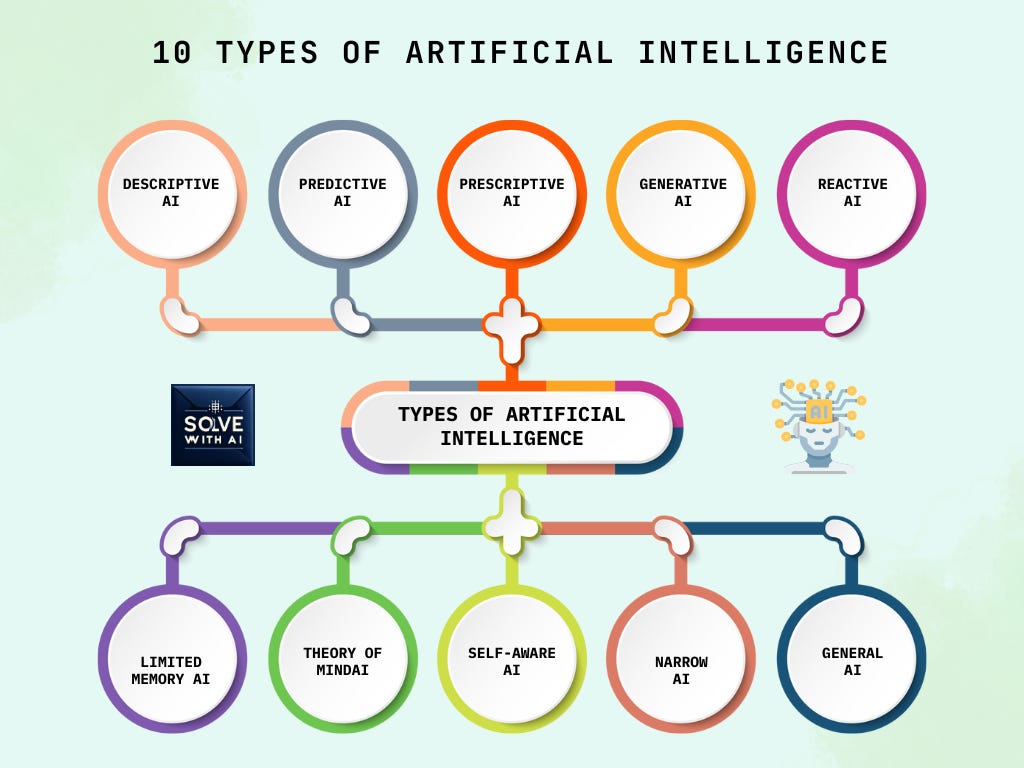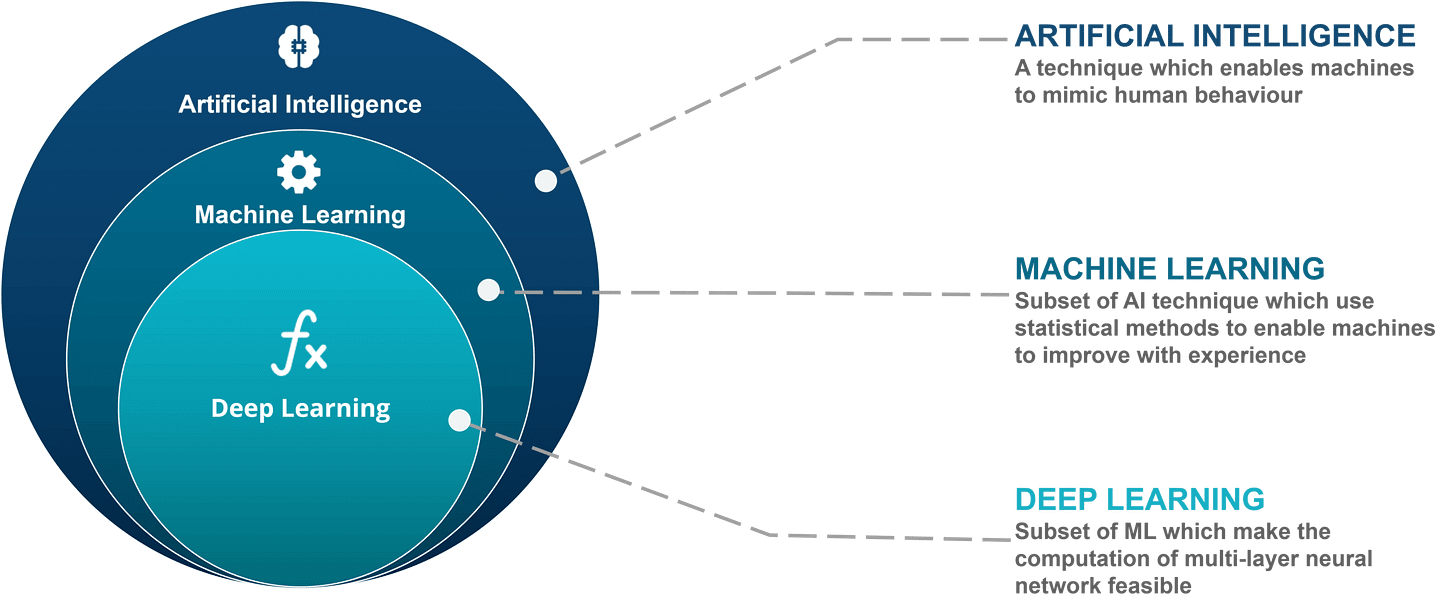Hey AI Productivity Explorer
I am writing this out of my normal weekend schedule. This topic has been lingering in my mind for a while, so I want to push through because it’s important.
By now, we know that AI is changing how service businesses and SaaS companies operate.
It’s automating customer support, predicting churn, personalizing marketing, and even handling financial forecasting. But here’s where most founders, executives and operators, and teams go wrong, which is thinking of AI as a one-size-fits-all solution.
It’s not.
But it’s not your fault. It’s the proliferation of the word AI in our business and personal lives.
This makes it harder to distinguish Machine learning and its subset of Deep Learning (LLMs reside under Deep Learning)
Source: Edureka.co
In my mind, AI isn’t a single tool. It’s an ecosystem. Some AI models tell you what happened (so you can diagnose problems). Some predict what will happen (so you can plan). Others prescribe the best course of action (so you can optimize results).
Then we have GPT LLMs AI that produces content and simply reacts to inputs, and AI that learns and adapts over time.
If you don’t understand the differences, you’ll either underutilize AI (wasting opportunities) or misapply it (wasting money). Plus, it will impact your AI strategy (more on this in upcoming posts).
That’s what we’re fixing today.
In this post, we’re breaking down the 10 types of AI every SaaS and service business owner needs to know with real-world use cases to help you pick the right AI for the right job.
Let’s dive in
The Core AI Categories: Understanding the 10 Types of AI
If you want AI to be a true asset in your SaaS or service business, you need to match the right type of AI to the right problem.
This takes us to four major categories of AI:
1. Data-Driven AI – Helps you analyze, predict, and optimize decisions.
2. Generative & Interactive AI – Creates content and responds to inputs.
3. Learning AI – Adapts based on past experiences.
4. Advanced AI – Thinks autonomously (future AI).
(A) Data-Driven AI (Analyzing & Decision-Support)
These AI types focus on breaking down data, spotting trends, and guiding decisions.
1. Descriptive AI – What Happened?
Descriptive AI looks at past data and tells you what happened and why. It’s the AI behind analytics dashboards, sales reports, and churn analysis.
Use Case for SaaS/Service Businesses:
• Helps analyze customer churn and user behavior patterns.
• Identifies trends in customer support tickets.
• Reveals which marketing campaigns worked (and which flopped).
Example: Google Analytics, Salesforce Reports, and Mixpanel use descriptive AI to turn raw data into insights.
2. Predictive AI – What will happen?
Predictive AI analyzes patterns and forecasts future outcomes. It’s the algorithm behind lead scoring, demand forecasting, and proactive customer retention strategies.
Use case for SaaS and service businesses:
• Predicts which customers are likely to churn
• Forecasts demand for services based on past trends
• Suggests upsells and cross-sells based on user behavior
Example: HubSpot uses predictive AI to score leads. Netflix predicts what users will binge-watch next.
3. Prescriptive AI – What should we do?
Prescriptive AI goes a step further. It doesn’t just predict, it recommends actions based on data. It’s used in automation, optimization, and personalized decision-making.
Use case for SaaS and service businesses:
• Recommends personalized content or features to users
• Automates support workflows by suggesting the best responses
• Optimizes ad spend based on campaign performance
Example: Google Ads’ Smart Bidding, AI-driven pricing engines, and AI-powered customer support tools like Intercom.
(B) Generative and Interactive AI
These AI types create content and engage directly with customers.
4. Generative AI – Creating content, code, and more
Generative AI produces text, images, videos, and even software code. It’s revolutionizing marketing, customer support, and content creation.
Use case for SaaS and service businesses:
• Writes blog posts, product descriptions, and ad copy
• Automates customer responses in chatbots and email marketing
• Generates code for software development
Example: ChatGPT, Jasper.ai, MidJourney for images, and GitHub Copilot for code.
5. Reactive AI – Instant responses, no learning
Reactive AI operates on predefined rules. It responds to inputs but doesn’t learn or adapt. It’s great for handling structured, repetitive tasks.
Use case for SaaS and service businesses:
• Rule-based chatbots that answer common customer questions
• Fraud detection systems that flag suspicious transactions
• Automated alerts and notifications
Example: FAQ bots, spam filters, and automated billing alerts.
(C) Learning AI: Improving Over Time
These AI types learn from past experiences to improve performance.
6. Limited Memory AI – Learning from past data
Unlike reactive AI, limited memory AI remembers past interactions and uses them to make better decisions. It’s the foundation of recommendation engines and self-learning automation.
Use case for SaaS and service businesses:
• Personalized product recommendations based on past purchases
• AI-driven chatbots that improve over time by learning from conversations
• Self-adjusting pricing models based on customer demand
Example: Amazon’s product recommendations, Tesla’s self-driving AI, and AI-powered customer support like Zendesk’s Answer Bot.
7. Theory of Mind AI – Understanding human emotions
This AI type is still in research, but the goal is to understand human emotions, beliefs, and intentions to interact more naturally.
Potential use cases:
• AI-driven sales assistants that adapt their tone based on customer sentiment
• AI coaches for employee training and performance feedback
• Advanced customer service bots that recognize frustration and adjust responses
Example: Still in development, but early versions exist in sentiment analysis tools and AI voice assistants.
(D) Advanced AI: Autonomous and Self-Improving
These AI types represent the future—AI that is independent, adaptable, and potentially self-aware.
8. Self-Aware AI – Theoretical future AI
This is the AI you see in sci-fi. AI that understands its existence, makes independent decisions, and adapts to complex environments.
Use case: None yet. If we ever get here, AI will be more than just a tool, in fact it’ll be a thinking partner making your business decisions for you while you enjoy a long vacation ;).
9. Narrow AI (Weak AI) – Specialized for one task
Narrow AI is today’s AI. It’s great at one specific task but can’t transfer knowledge between tasks.
Use case for SaaS and service businesses:
• AI-powered scheduling assistants
• AI-driven fraud detection in payments
• AI-powered grammar checkers
Example: Siri, Google Assistant, OpenAI’s ChatGPT, and AI-driven sales forecasting tools.
10. General AI (Strong AI) – The holy grail
General AI can think, learn, and apply intelligence like a human across multiple domains. We’re not there yet, but when we are, AI will replace human cognitive labor.
Use case: Still hypothetical. If achieved, General AI could fully automate decision-making, creative thinking, and business strategy.
Example: Not real yet, but the ultimate goal of AI research.
Final Thoughts: Choosing the Right AI for Your Business
The key is using the right AI for the right task.
Need insights from your data? Use descriptive, predictive, or prescriptive AI.
Need to create content or automate responses? Use generative or reactive AI.
Need AI that improves over time? Use limited memory AI.
Want to prepare for the future? Watch for Theory of Mind, Self-Aware, and General AI.
Which AI type are you already using? And which one do you need to integrate next?
Let’s discuss in the comments.
Best,
Creator of Solve with AI.






